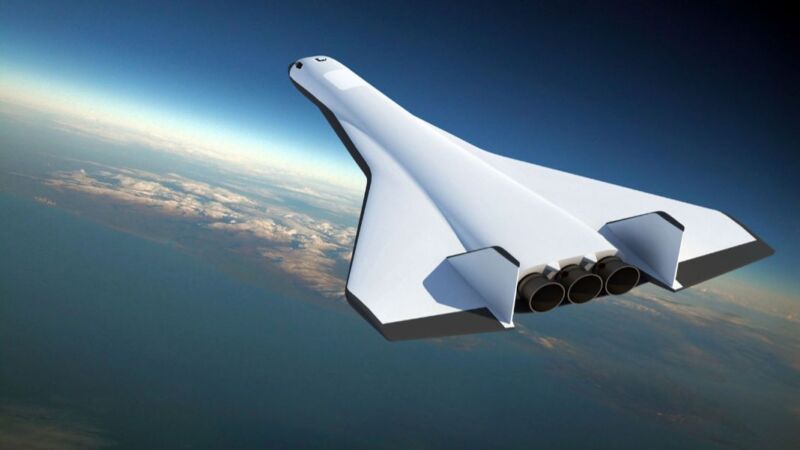A Washington-state based aerospace company has exited stealth mode by announcing plans to develop one of the holy grails of spaceflight—a single-stage-to-orbit space plane. Radian Aerospace said it is deep into the design of an airplane-like vehicle that could take off from a runway, ignite its rocket engines, spend time in orbit, and then return to Earth and land on a runway.
"We all understand how difficult this is," said Livingston Holder, Radian’s co-founder, chief technology officer, and former head of the Future Space Transportation and X-33 program at Boeing.
On Wednesday, Radian announced that it had recently closed a $27.5 million round of seed funding, led by Fine Structure Ventures. To date, Radian has raised about $32 million and has 18 full-time employees at its Renton, Washington, headquarters.
During an interview with Ars, Holder and Radian CEO Richard Humphrey explained that they realized it would require significantly more funding to build such an ambitious orbital space plane. Funding will pace their development efforts. For that reason, Humphrey said he was not comfortable putting a date on the company's first test flights but said that Radian was aiming to have an operational capability well before the end of the 2020s.
The current design of Radian One calls for taking up to five people and 5,000 pounds of cargo into orbit. The vehicle would have a down-mass capability of about 10,000 pounds and be powered by three liquid-fueled engines. The idea would be to get as close to airline operations as possible, by flying, landing, re-fueling, and flying again.
Since its founding in 2016, Radian has focused on the propulsion and structure of a vehicle that must withstand a variety of thermal and pressure environments. Humphrey said the company has built and tested its first "full-scale" engine. At full power, this cryogenic-fueled engine will have a thrust of about 200,000 pounds.
"We’re still in the leading edges of that work," Humphrey said. "We understand the fundamentals, we can start it, we can stop it, and we're taking a series of small, progressive steps to get to a full capability."
Humphrey, Holder, and the company's other co-founders, Curtis Gifford and Jeff Feige, have a variety of backgrounds at NASA, the US Department of Defense, and various new space companies. They plan to draw upon earlier work by NASA and contractors who have previously attempted to develop a single-stage-to-orbit spacecraft as well as XCOR, which sought to build a suborbital space plane but had to shut down about five years ago due to a lack of funding.
NASA's last serious attempt at building such a space plane came in the late 1990s, with its "Reusable Launch Vehicle Program," which led to the X-33 program. NASA eventually selected a design by Lockheed Martin for the X-33, but this program fizzled out in 2001 as Lockheed and NASA ran into technical problems, and NASA's priorities changed.
Much has changed in the last two decades to make private development of such a vehicle more feasible, Humphrey said. Lightweight aerospace composites were mostly experimental then but are a well-understood technology now. Space launch companies also now regularly "super chill" their liquid propellants to gain more performance during flight, which Radian plans to do.
And perhaps most importantly, in the wake of SpaceX's success with its launch program, there is ever more private capital flowing into spaceflight operations. This means it should be easier for Radian to raise the substantial amounts of money it will need to bring an orbital space plane on line—more than $1 billion, almost certainly—than it would have even five or 10 years ago.
"A long time has passed since the last true attempt at this," Holder said. "The technology has moved forward, and people are willing to fund projects like this."
If Radian can succeed technologically, large markets would likely open. A vehicle like Radian One would be well suited to fly people to commercial space stations in low Earth orbit, which NASA seeks to foster development of by 2030. These planes could also perform Earth observation work and play a role in bringing back space-manufactured goods. There is also the potential for point-to-point travel on Earth.
There can be no question that this is a hugely challenging endeavor that many people have tried before. Will Radian find the right stuff, at the right moment in time? We'd like to think so.



3175x175(CURRENT).thumb.jpg.b05acc060982b36f5891ba728e6d953c.jpg)

Recommended Comments
There are no comments to display.
Join the conversation
You can post now and register later. If you have an account, sign in now to post with your account.
Note: Your post will require moderator approval before it will be visible.